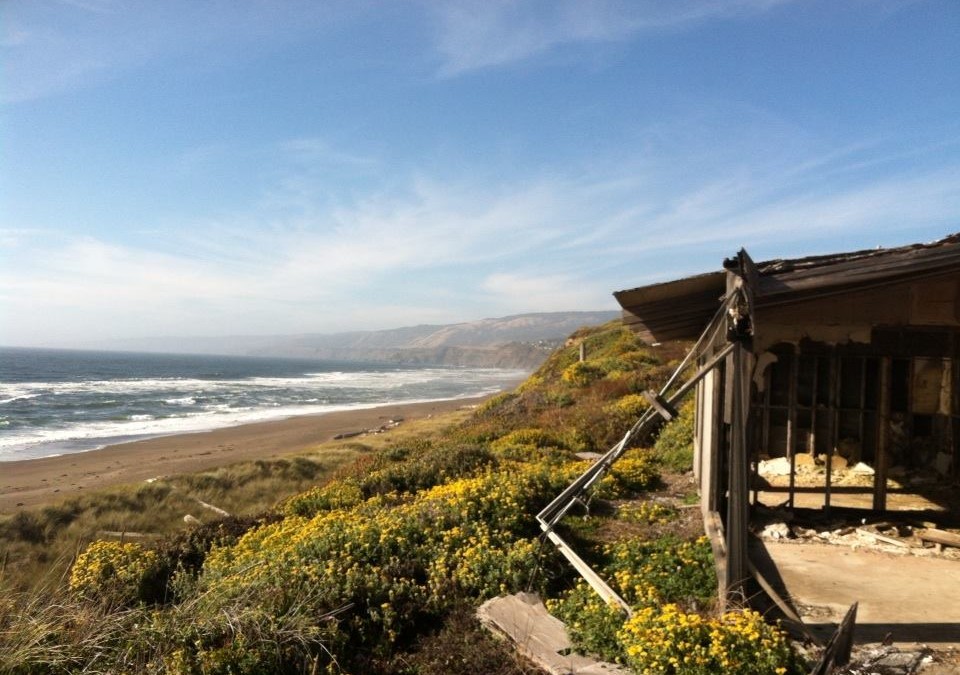This past week, while visiting San Francisco, I had the pleasure of meeting with several of the Authentic universe’s most active, long-term creators. Some had been around since the inception of circling in the late ’90s, and others, since the days of the first immersive weekends, where participants would get circled “until they were done” – sometimes for 8 or 9 hours at a time. Two of the men I met with I knew only through the worlds of Facebook and friends. We had never spoken before.
One, Michael McDonald, is the founder and leader of San Francisco’s most active Authentic Relating Games-style event, Relational Alchemy. He is also the only other person I know of – aside from myself – that holds open authentic leadership trainings.
The other is Guy Sengstock, one of the three recognized creators of Circling, and co-lead of the Circling Institute (with whom we will be sponsoring the first ever international Circling Summit in Boulder this fall!). Guy is a living legend in the Authentic communities.
I expected to have the normal first-time coffee connection with these men. The usual pleasantries of assessing each others’ motivation for reaching out (or saying yes to the reach), a history of our respective achievements, and an hour, perhaps two at most, talking about our work in authentic community and course creation.
I should have known better.
One more reason to love authentic relating: every connection, no matter how brief, is a relationship. Whatever we expect to happen, whatever the set context was, if both members of the conversation are really present, what happens follows the thread of our desire. What do I want? What does the person I’m relating with want? More importantly, what feels most alive between us, right here, right now? For both of these connections, the conversation ranged from topics I’d expected (course creation and personal history), to ones I’d never expected (love, hero worship, Burning Man, and the essential reason why circling is what it is). I ended up talking with each of these men for over 6 hours. I never did get around to seeing the Golden Gate Bridge.
Aside from all the things we connected on, what struck me most about these conversations was the feeling of these men.
In circling, we talk about the “how” versus the “what”. The “what” is content. Guy and I talked for a long time about the history of authentic practice; the way we process reality; personality types; etc. This is content. The “how” is the way in which we talked about these things. How we stopped every few minutes to connect on the ways we were being with each other: how he noticed the way I paused to contemplate after being asked a question, how I felt involved in the conversation even when he was telling a story.
“How” is context – if somebody had been watching us from across the room, how would we have seemed? What would that observer have imagined our relationship to be? If I were to witness my own emotions and responses from the inside, how would they differ from what they are in other situations? This sub-strata of communication is where authenticity often lies. It is where we get a chance to see each other deeply. And – for a brief side-note – it characterizes one of the ways that Guy is a master circler: when he would notice things about me, he would see not only the “what” and “how” but also the who.
It’s hard not to digress, in writing this post, because of just how much happened in these conversations, and how much I want to relate! Returning, dear readers, to our story:
Guy and Michael (as well as the other Authentic-ites I met on this journey) shared a unique way of being. They were, plain and simply, full of joy.
To me, joy is a unique emotion. It’s more than just happiness, contentment, or even accomplishment. It’s the shining through of something deeper. Something that says, “I am allowing this moment to be perfect the way it is.” The more self-judgment, judgment of others, and judgment of my environment that I can drop, the more joy I experience; because joy and judgment rarely seem to co-exist. Maybe it’s for this reason that (to me) joy feels young, childish, unconstrained. And – although I’d never quite thought of it this way before – if authentic relating is truly practiced as a way of life, joy should be a byproduct. The core of authentic relating, and of circling, is to as fully as possible drop our judgments of ourselves and others, and experience the unfiltered nature of reality.
When I was with Michael, and then with Guy, I felt joy – both mine and theirs. Sometimes we would stop speaking entirely and just look at each other, feeling that. Sometimes we would acknowledge it. More often, it was the undercurrent to our content, the how to our what: an electric, warm, smiling context of being present together.
Guy and Michael reminded me of the promise of authentic relating. Despite all that they’d accomplished, they each showed up as humble, joyful, endlessly caring about other people and about me.
They reminded me of the difference between transformational practice and relational practice. Any transformation, in circling or AR, is a byproduct of loving and connecting to people as deeply as possible. If transformation doesn’t occur – oh well; at least we’ve spent however much time we had in actually seeing each other, human to human.
That is why I choose authentic relating as a way of life.
Because even Guy Sengsock and Michael McDonald, who have been in this world for years (in Guy’s case, since its inception) made time to connect with a stranger, and were willing to share many hours past politeness because of the joy of those connections. Because after decades of practice, their joy felt simple, infectious, and unrestrained.
Doesn’t get much better than that.

